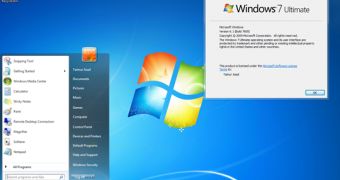Microsoft claims it has already sold a total of 4 million Windows 8 upgrades and the new OS enjoys a terrific success, but statistics demonstrate otherwise.
According to figures released by Net Applications, only 0.45 percent of all computers were running Windows 8 in October.
While this isn’t at all worrying given the fact that Microsoft officially rolled out the new OS on October 26, there’s one name that puts an incredible pressure on Windows 8.
It’s Windows 7 and, as far as official statistics go, the Windows 8 predecessor was a lot more popular during its first days on the market.
Windows 8 was released to the public on October 26, 2012, so the new OS had only six days to make a name for itself last month. Windows 7, on the other hand, was unveiled on October 22, 2009, so the previous Windows contraption had a bit more time to appeal to potential buyers in the first month of availability.
Four days, however, shouldn’t make any significant difference, so the actual statistics concerning the post-release adoption rate could help us make an idea on where the new OS really stands.
While only 0.45 percent of all computers had Windows 8 installed last month, Windows 7 was five times more popular during the same month three years ago.
Windows 7 was released on October 22, 2009 and is still considered one of the most successfull operating systems released by Microsoft. After Windows XP, of course. The adoption rate for Windows 7 in October 2009 was 2.33 percent, which is nothing more than a living proof that people are still reluctant when it comes to Windows 8.Microsoft’s new Windows flavor is often considered confusing, mostly because it adopts a new GUI and it dumps some traditional Windows elements. The Start Menu, for example, is now replaced by a brand new Start Screen, fully optimized for the touch, which shows the installed apps with the help of live tiles.

 14 DAY TRIAL //
14 DAY TRIAL // 